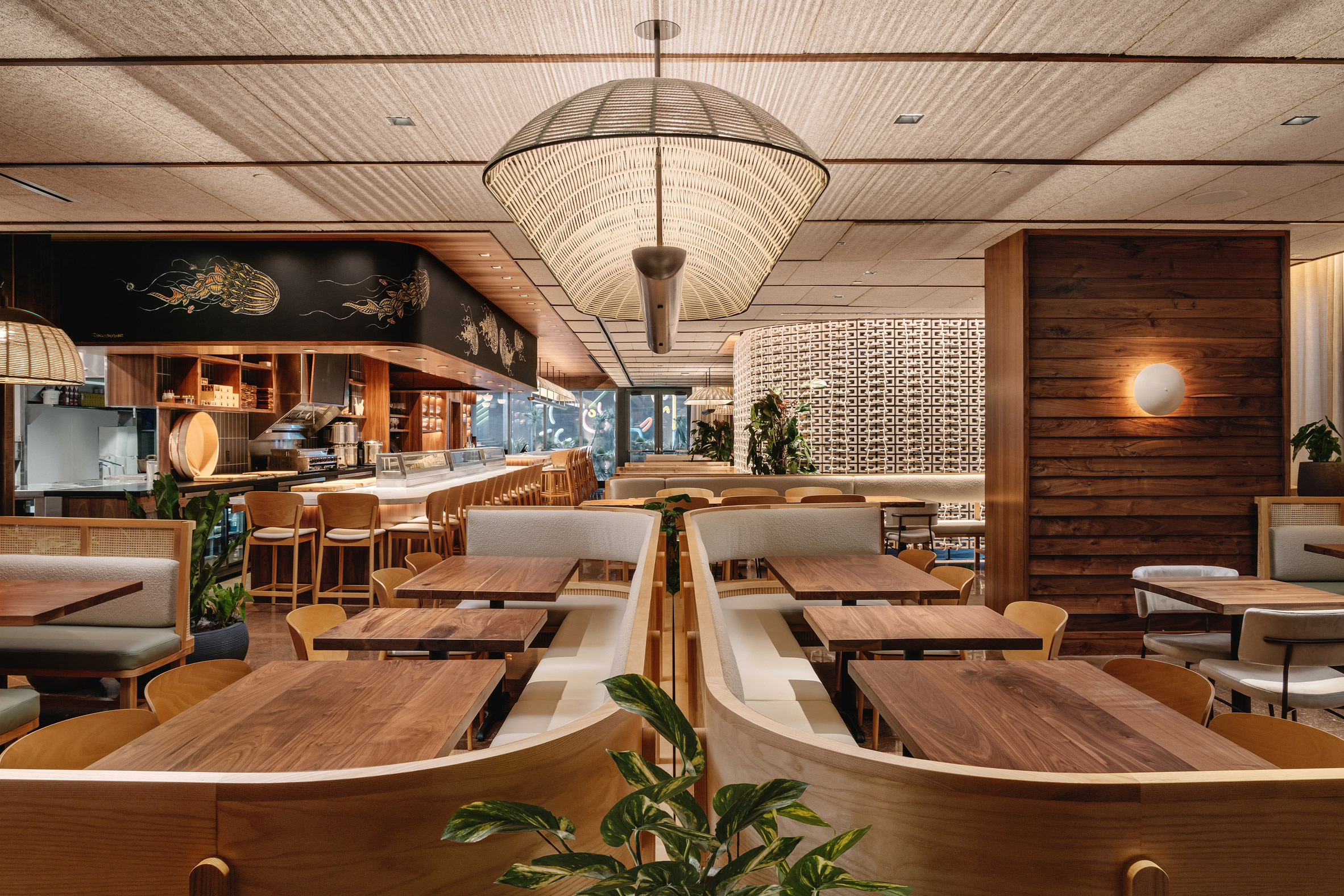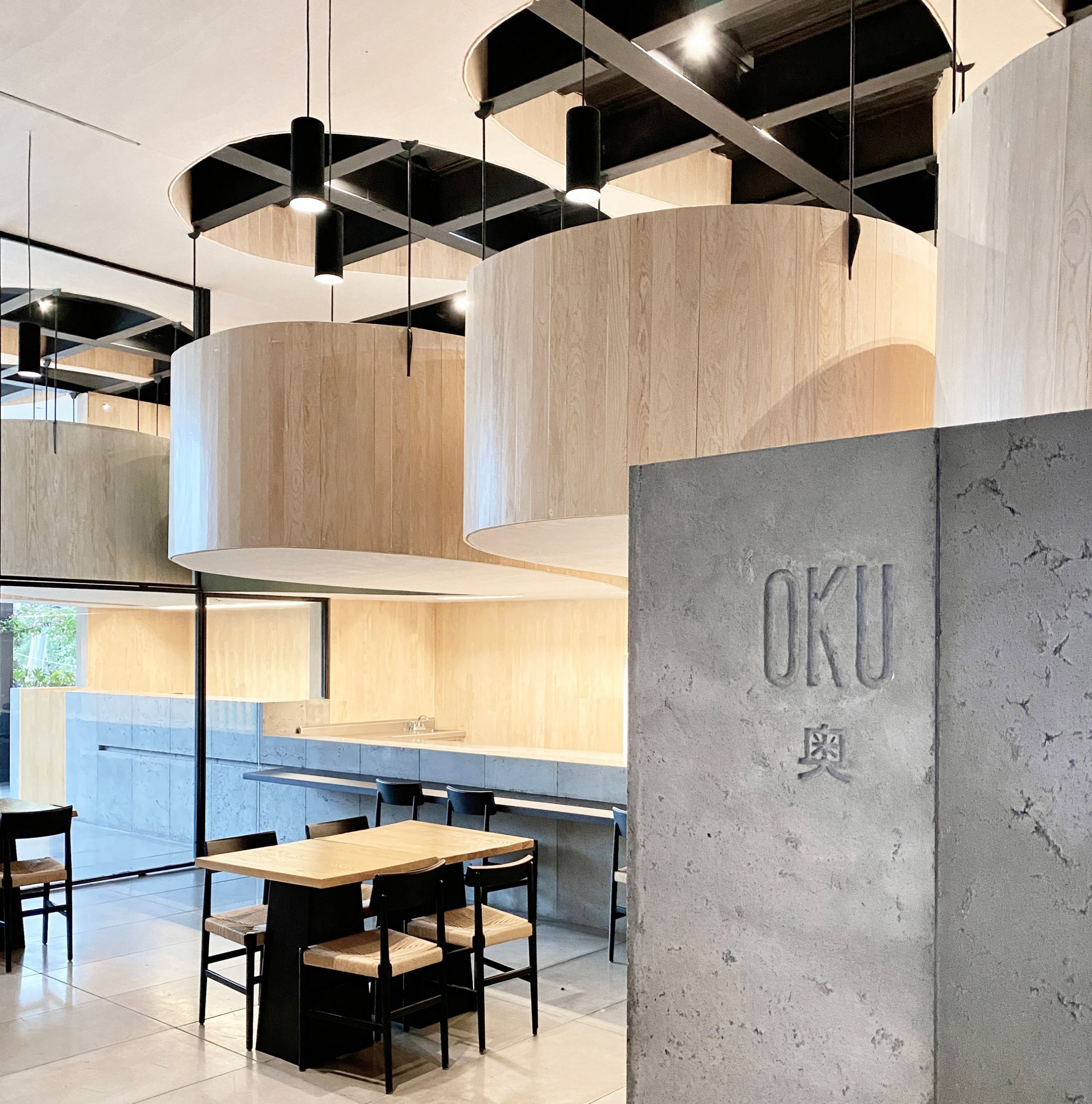Stitched brick wall welcomes guests to Uchi Miami restaurant by Michael Hsu


Masonry bricks are tied together to form a curved entryway at this sushi restaurant in Miami's Wynwood neighbourhood, by Michael Hsu Office of Architecture.
At Uchi Miami, the American firm aimed to create a "perfect contrast" between the materials, techniques and styles of Japan and Florida.
 Uchi Miami in Wynwood is fronted by a white structure wrapped in slats
Uchi Miami in Wynwood is fronted by a white structure wrapped in slats
"Uchi tells a story of tactility, honoring Japanese tradition, but has been infused with local notes," said Michael Hsu Office of Architecture.
"Wrapping, layering and stitching, inspired by native art forms, apply sophisticated design to simple objects to elevate ordinary materials found in daily life."
 A wall of woven bricks by Vas Bets greets guests upon entry
A wall of woven bricks by Vas Bets greets guests upon entry
Flanked by troughs filled with tropical plants, the entrance is surrounded by a pure white frame wrapped with vertical slats.
Once through the glass doors, guests are guided around to the host stand by a curved wall of concrete blocks created by locally based artist Vas Bets.
 A chalk mural by Sam Angus Jackson is found above the sushi bar
A chalk mural by Sam Angus Jackson is found above the sushi bar
The blocks are tied together with rope, which weaves through their holes in a repeated pattern that is reflected in the polished floor.
In the main dining area, a mix of banquettes, bar seating and high-top tables offers a variety of configurations for parties of different sizes.
 Warbach's woven light fixtures create patterns across the ceiling
Warbach's woven light fixtures create patterns across the ceiling
The wooden banquettes feature curved woven back panels and grey upholstered cushions – in a bouclé fabric for the backs and leather for the seats.
Walnut table tops and ash chairs match panelling on the walls and ceiling, while other surfaces are lined with bright red and orange wallpaper.
[ 
Read:
Pirajean Lees channels 1920s Japan in ornate Dubai restaurant interior
](https://www.dezeen.com/2021/09/05/pirajean-lees-mimi-kakushi-dubai-restaurant/)
Other artist collaborations within the restaurant include a hand-drawn chalk mural of jellyfish by artist Sam Angus Jackson, found above the sushi bar.
Hand-woven wall hangings by Miami artist Elan Byrd decorate the series of private dining areas, which run along one end of the restaurant behind black-framed glass panels.
 Bright red wallpaper offers a contrast to the natural materials
Bright red wallpaper offers a contrast to the natural materials
Positioned over the bars and dining tables, lighting studio Warbach's bespoke fixtures continue the woven motif.
"The overhead large, custom basket light provides a warm glow to illuminate the wall's shapes and textile-inspired characteristics," said Michael Hsu's team.
 The studio aimed to blend a variety of textures and materials throughout the restaurant
The studio aimed to blend a variety of textures and materials throughout the restaurant
Michael Hsu Office of Architecture has previously completed a restaurant with a curved wooden ceiling in its home city of Austin, Texas.
The studio has also designed a remote home in Texas Hill Country and the interiors for Shake Shack's headquarters in New York City.
The photography is byChase Daniel.
Project credits:
Owner: Hai Hospitality
Architect of record: Form Group Architecture
General contractor: City Construction Group
Project management: Amicon Management
Kitchen consultant: Trimark USA
MEP: RPJ Engineering
Landscape designer: Plant the Future
The post Stitched brick wall welcomes guests to Uchi Miami restaurant by Michael Hsu appeared first on Dezeen.
#restaurantsandbars #all #interiors #usa #miami #bricks #restaurants #florida #michaelhsuofficeofarchitecture #japaneserestaurants



 Oku is a sushi restaurant in Mexico City
Oku is a sushi restaurant in Mexico City The restaurant is Michan Architecture's second of its kind
The restaurant is Michan Architecture's second of its kind "Floating tables" are arrayed along a corridor
"Floating tables" are arrayed along a corridor Curved stairs connect Oku's two levels
Curved stairs connect Oku's two levels
 Cylindrical black lighting fixtures hang from the ceiling
Cylindrical black lighting fixtures hang from the ceiling The team used neutral colours and clad surfaces in pinewood throughout Oku
The team used neutral colours and clad surfaces in pinewood throughout Oku